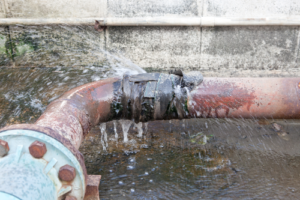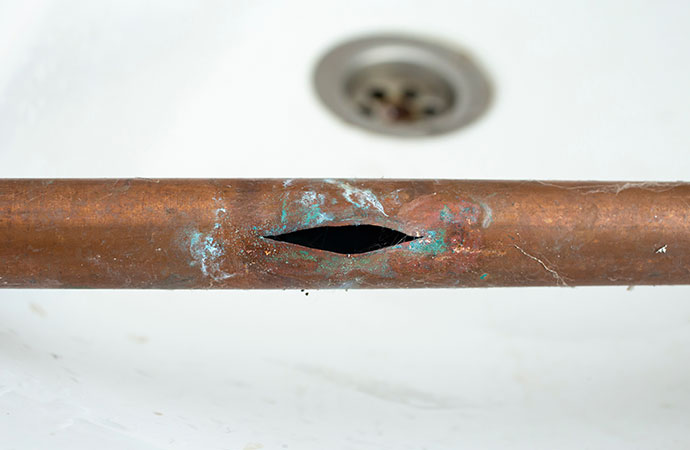Identifying a Leaky Pipe and Quickly Restoring It Properly
Identifying a Leaky Pipe and Quickly Restoring It Properly
Blog Article
In this article in the next paragraph you will discover some exceptional advice regarding What to Know Before Installing a Dishwasher.

A ruptured pipe is a significant emergency; you can just stand as you enjoy water you pay dearly to rejoin with the earth. In worse instances, you observe a swimming pool on your cooking area floor, which is a terrific journey danger, especially if you have kids around. If the pipeline that ruptured was in your wall surfaces, problem: you might need to repaint that entire section.
Just how can a calamity like a ruptured pipeline be protected against and handled? Well, by paying attention to your expert emergency plumbing professionals and adhering to these policies.
How do I understand when my pipes have ruptured?
Rising and fall water stress
Pipelines do not simply burst in a day. You may have noticed that your kitchen area faucet or shower does not run instantly when you turn the faucet. It might pause for a few seconds and then blast you with even more pressure than common.
In various other circumstances, the water may seem regular initially, after that drop in pressure after a few seconds.
Wet walls as well as water spots
Before a pipeline bursts, it will leak, the majority of times. If this consistent dripping goes undetected, the leak might graduate right into a wide gash in your pipe. One simple means to avoid this emergency is to look out for damp wall surfaces ad water spots. These water stains will lead you right to the leakage.
Puddles under pipes as well as sinks
When a pipeline bursts, the outflow develops a pool. It might appear that the pool is growing in dimension, and no matter the number of times you wipe the pool, in a couple of mins, there's an additional one waiting to be cleaned up. Typically, you might not be able to trace the puddle to any noticeable pipes. This is an indication to call a specialist plumber.
Untraceable leaking sounds
Pipe ruptureds can occur in the most unpleasant places, like within concrete, inside wall surfaces, or under sinks. When your home goes silent, you might be able to hear an aggravatingly consistent dripping sound. Even after you've inspected your shower head and also kitchen area faucet, the dripping might proceed.
Precious reader, the leaking might be coming from a pipeline inside your walls. There isn't much you can do about that, other than inform a specialist plumber.
Turn off the Water
When water freezes, it increases in quantity by about 9 percent. As well as it expands with tremendous force: The pressure inside pipelines might go from 40 extra pounds per square inch to 40,000 psi! No pipe can hold that much stress, so it bursts. The break might occur where the ice kinds, however more often, it happens where water stress discovers a weak point in the pipe. That might be inches or even feet from the icy location. Discover the water shutoff valve as well as turn off the water to prevent more damage. You may additionally need to turn off the electrical power as well, depending on where the leaks takes place and how huge it is.
Contaminated water
Many people assume a burst pipeline is a one-way outlet. Quite the contrary. As water flows out of the hole or laceration in your plumbing system, contaminants locate their way in.
Your water might be contaminated from the source, so if you can, examine if your water storage tank has any kind of troubles. Nonetheless, if your drinking water is supplied and also cleansed by the local government, you need to call your plumber quickly if you see or smell anything amusing in your water.
What do I do when I identify a ruptured pipeline?
Your water meter will continue to run even while your water wastes. To lessen your losses, locate the primary controls and transform the supply off. The water pipe are an above-ground framework beside your building.
How to Fix & Detect a Leaking Pipe
How Do I Know if a Pipe is Leaking?
Leak detection tests can help you determine if your pipe has a leak. Even if you don’t see an apparent leak, you should still conduct leak detection tests regularly to save water and money—and prevent major damage to your home.
Water meter. It can be helpful to figure out what your usual water meter usage numbers are and then monitor them regularly. To monitor your meter, first, turn off all water faucets in your home. Check the meter and write down the numbers. In a few hours, check the meter again. If the numbers have changed, you have a leak. Water gauge. Use a water gauge to test your water pressure. Your showerhead should produce a certain amount of water pressure based on its model and design. If the pressure is lower than it is supposed to be for that specific showerhead, your home likely has a leak. Puddles. Look inside your bathroom, laundry, and kitchen sink cabinets. Puddles around the cabinets or around toilets, tubs, showers, and washing machines indicate the presence of a leaking pipe. You may also notice loose tiles, peeling or flaking paint, or mold caused by water accumulation. Napkin test. Even if you don’t see any puddles, you may still have a leak. You can test for water leaks in the bathroom, laundry, and kitchen by wiping below-sink connections with a napkin, paper towel, or piece of toilet paper. If it becomes damp, you probably have a leaking pipe under the sink. Discolored walls. Walls that are discolored—usually with brown or yellow stains—or bulging might mean that they have been impacted by water damage caused by a leaking pipe. Smell. A leaky pipe will create sitting water, and over time, that water may develop a musty smell. If your home smells musty, but you can’t locate the source, it may be due to a leak. Steps for Fixing a Leaking Pipe
A leaky drain can be remedied by tightening the pipe base, replacing the drain seal, caulking the rim, and tightening the pipe nut. Similarly, a leaking toilet pipe can be treated by tightening the packing nut. You may also need to replace the valve. A leaky faucet may just need tightening or replacement of the washers. If that doesn’t work, consider replacing your faucet. If your pipe has a hole in it, you may want to use a pipe leak sealer or pipe leak tape. This quick fix for water pipe leaks can also temporarily fix a copper pipe leak. https://www.ahs.com/home-matters/quick-tips/how-to-tell-if-pipes-are-leaking/

I am very serious about What to Know Before Installing a Dishwasher and I'm hoping you enjoyed reading our blog posting. Do you know about somebody who is involved in How to Install and Connect a New Dishwasher? Do not hesitate to promote it. Thanks for taking the time to read it.
Phone Report this page